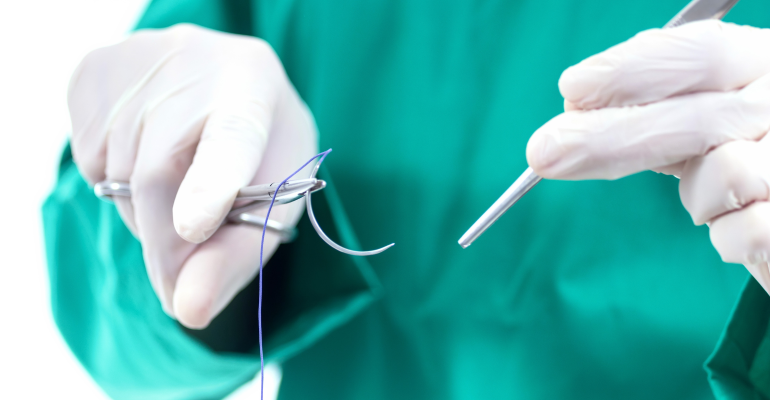Following the global epidemic of SARS-COV-2, most countries have recommended limiting non-urgent patient contact. In terms of practice guidelines, recommendations are still evolving, although many guidelines advocate limiting non-urgent operations and patient contact, conserving personal protection equipment, and limiting patient and physician interaction.
Before official regulations and consensus standards were established at the start of the COVID-19 pandemic, common practice was concerned about patients' need to return to the clinic following surgery for superficial suture removal. Patients who are older and may have underlying comorbidities are thought to be the most susceptible to the virus. As a result, several physicians explored wound closure procedures that would effectively support their wounds while also reducing the necessity for personal contact with patients.
Depending on the size of the incision, medical practitioners explored several wound closure methods. Sealants, such as acrylate or fast-absorbing gut sutures can be used alone for minor wounds once dermal absorbable sutures have been placed. Physicians preferred a more lasting superficial closure technique for bigger wounds that would not prematurely fail and could be readily removed by the patient at home.
According to JAAD Case reports published in Elsevier journal, it has been observed that using an adhesive retention suture device can help support vulnerable skin during wound closure. This ARS device is a low-cost, FDA-approved class I suture retention device that strengthens the skin and allows for high suture tension without causing tears. Physicians in this research chose to utilise the ARS device with retention sutures as the main support for many wound closures prior to COVID-19 to save patients from having to return for a follow-up appointment.
Other wound closure methods that require less in-clinic follow-up, such as topical adhesives or fast-absorbing gut sutures, can be considered. Physicians believe that using them without the ARS device would result in ineffective wound closure in high-tension wounds. Previous research revealed that cyanoacrylate and fast-absorbing gut had equal aesthetic effects when it came to closing linear wounds on the face, but that fast-absorbing gut was superior to cyanoacrylate when it came to linear closures of high-tension wounds on the trunk and extremities. The use of fast-absorbing gut is restricted by its tensile strength, which lasts around 5 days and increases the danger of wound dehiscence, particularly on fragile skin under stress. Fast gut may cause a strong inflammatory tissue reaction, which can be upsetting for patients and impair the aesthetic outcome.
Other adhesive closure devices, such as Clozex and Zip Surgical, are designed to offer just superficial wound support and are not as effective as ARS. They're designed to be utilised on wounds that have had their tension decreased by another closure method, for example, standard buried absorbable sutures, barbed sutures, or retention sutures.

